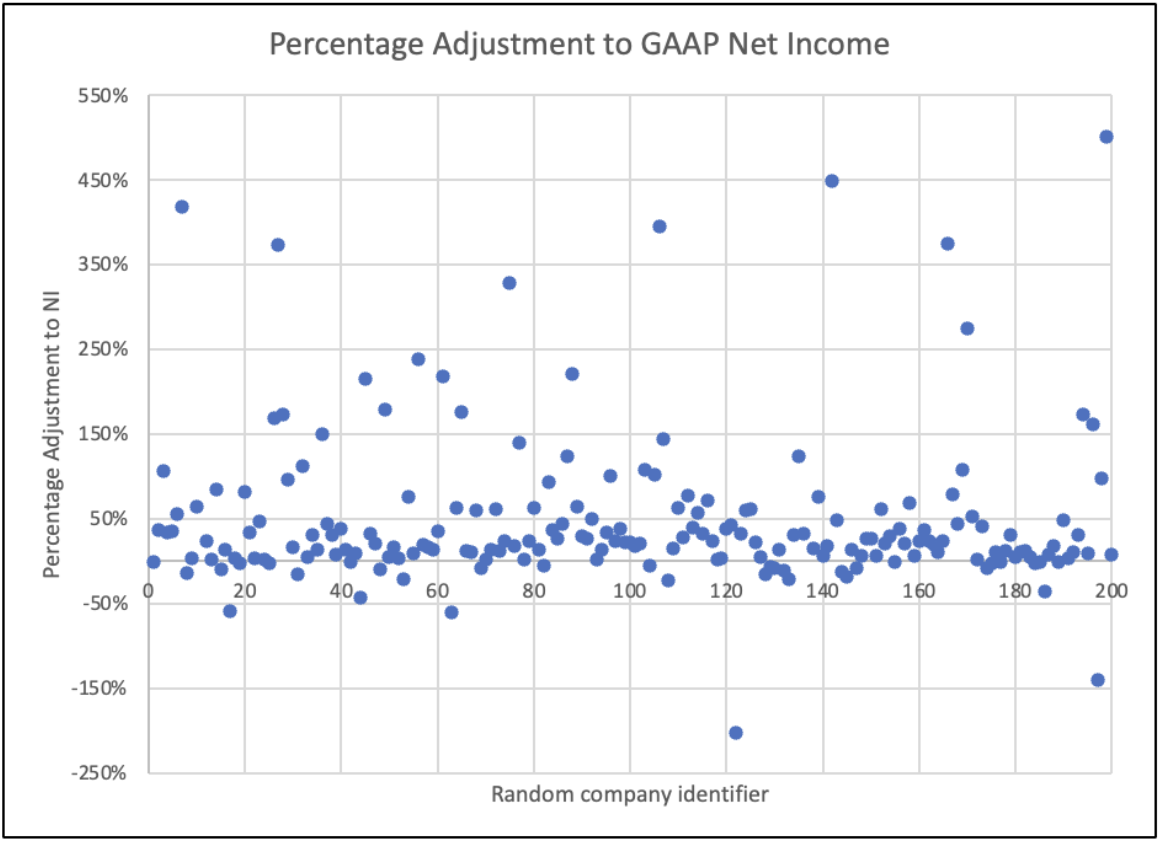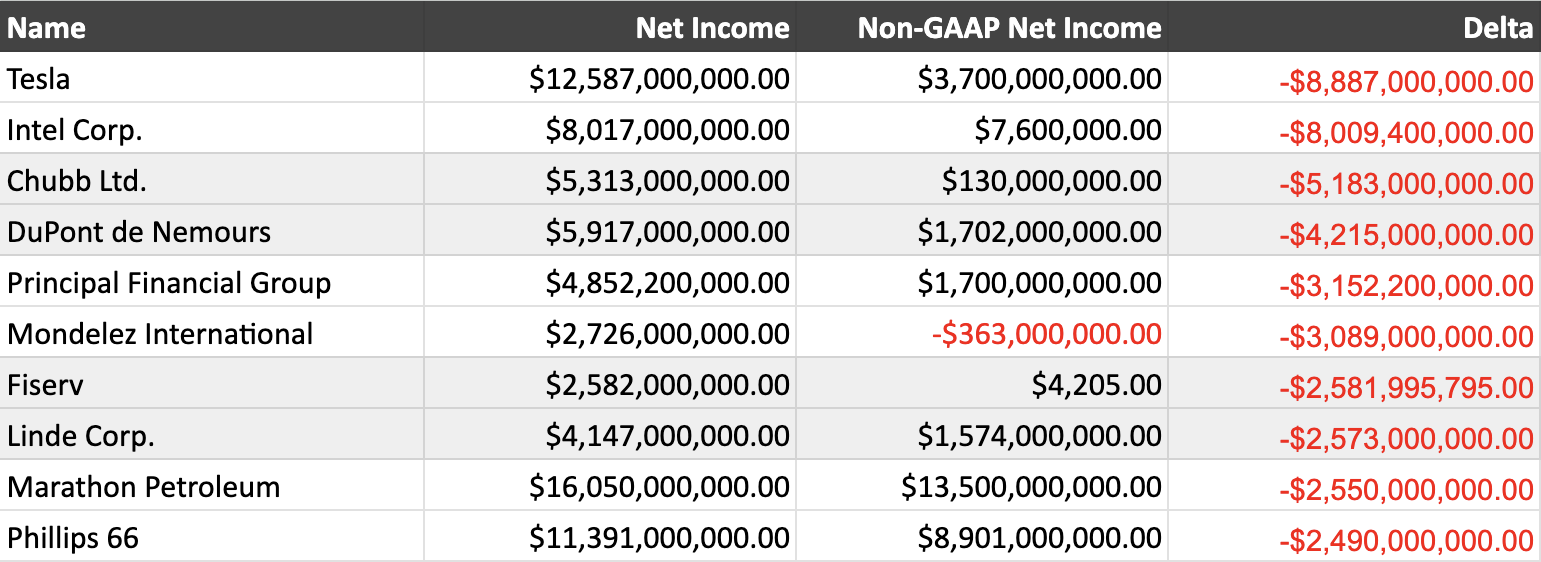Today we continue unpacking the findings from the 2022 Non-GAAP Reconciliations Report that Calcbench released last week, which examines the non-GAAP adjustments to net income that 200 companies in the S&P 500 had made to their annual financial reports.
The primary findings from that report were that non-GAAP adjustments to net income are growing larger (an average of $184 million, up 53 percent from the prior year); and that in the vast majority of cases those adjustments push non-GAAP net income higher than “traditional,” GAAP-approved net income.
Well, what about those few instances when non-GAAP net income is lower than GAAP net income? How often does that happen, and why?
As a technical matter, it happens because SEC rules say so. A company can report a wide range of non-GAAP adjustments, but it must report those adjustments consistently from one period to the next.
That is, a company can’t use a non-GAAP adjustment for one filing period that pushes non-GAAP net income higher, and then discard that same adjustment in subsequent periods because new totals now make that same non-GAAP line-item lower. Your earnings release needs to stick to its non-GAAP guns period after period, even if you sometimes end up shooting yourself in the foot.
So what does that look like in the real world? Our non-GAAP report offers some insights.
The Downward Dog Seldom Barks
First, downward adjustments are not common. Our 2022 report examined the non-GAAP disclosures of 200 companies in the S&P 500. Figure 1, below, is a scatterplot that shows which non-GAAP net income disclosures were higher or lower than GAAP net income, and to what extent. As you can see, most non-GAAP net income disclosures were zero to 50 percent higher than net income, although a few outliers had adjusted non-GAAP net income that was 400 percent or higher larger than GAAP net income.

More precisely, 83 percent of all companies adjusted non-GAAP net income upward, versus only 17 percent that adjusted non-GAAP net income downward. Among those 17 percent who did adjust downward, almost all of them were with 50 percent of GAAP net income. We had far fewer negative outliers than positive ones.
That said, one can easily find those downward dogs using Calcbench archives. For example, we visited our Multi-Company Search Page; searched the S&P 500 for companies that reported both net income and non-GAAP net income; and measured the difference between the two. Below is a table of the 10 firms with the biggest non-GAAP downward revisions for 2022. (Please note, the companies on this table are not necessarily also in our 2022 Non-GAAP Reconciliation Report.)

Next question: What, specifically, might force a company to report such large downward revisions? Let’s look at an example from our table above.
Marathon Petroleum
Marathon Petroleum ($MPC) is one interesting example because it has reported downward non-GAAP net income for two years in a row. You can find the details (for Marathon or any other company) by going to Calcbench’s Interactive Disclosures page and pulling up a company’s earnings release. If that company reports non-GAAP anything, it must reconcile that non-GAAP metric back to its closest GAAP counterpart.
Table 2, below, shows how Marathon went from larger GAAP net income to lower non-GAAP net income.

Short answer: Marathon has been selling lots of assets, including its Speedway gas station chain, which netted the company $11.7 billion in 2021 and another $60 million in 2022. A huge, one-time gain from an asset sale is exactly the sort of item that deserves special attention and non-GAAP treatment, but it also pushes net income down.
Las Vegas Sands
Another example of downward non-GAAP net income comes from Las Vegas Sands ($LVS). Sands reported net income of $1.83 billion for 2022 — and then through a series of non-GAAP adjustments ended up with a non-GAAP loss of $918 million. How’d that happen? See Table 3, below.

In this case the answer is clear: a $2.9 billion loss from discontinued operations, plus assorted other small adjustments around the edges. Perhaps that shouldn’t come as a surprise; as noted in last week’s post about non-GAAP adjustments, gains and losses from operations were the single most common category of adjustment we found.
Don’t forget that we also now have a second report on non-GAAP adjustments, comparing the adjustments made across various industry sectors. We’ll have a third one soon examining large adjustments at individual companies, and more analysis to come after that.
If you have specific non-GAAP issues you’d like us to explore, drop us an email at info@calcbench.com any time!